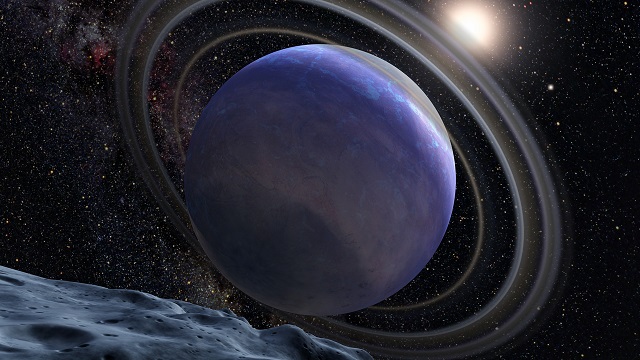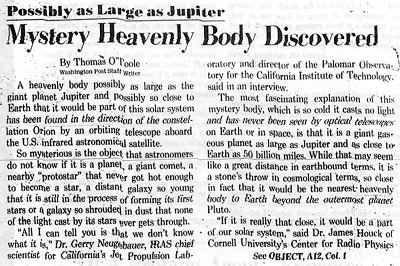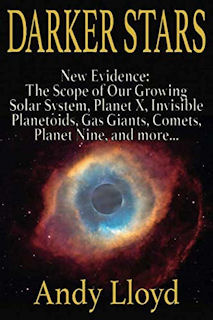Andy Lloyd's Dark Star Blog


Blog 93 (2025)
Did the human line first kick off in Asia over 1m years ago?
Image Credit: Chuang Zhao/Eurekalert/AFP/Getty Images
A tantalising prospect is emerging from new scientific discoveries in China. A reproduction of an ancient human skull, dated to 1 million years old, presents scientists with startling new evidence. It's been categorised within the group Homo longi or 'Dragon Man'.
"The latest work used advanced CT imaging, high-resolution surface scanning and sophisticated digital techniques to produce a virtual reconstruction of the skull. The skull’s large, squat brain case and jutting lower jaw are reminiscent of Homo erectus. But the overall shape and size of the brain case and teeth appear to place it much closer to Homo longi, a species that scientists have recently argued should incorporate the Denisovans." (1)
So, firstly, humans may have been around on Earth twice as long as was originally thought.
Secondly, the five known branches of large-brained human, which largely ran concurrently for hundreds of thousands of years (Asian erectus, heidelbergensis, sapiens, Neanderthals and Homo longi (including the Denisovans)), would have had an original precursor dating back over 1 million years.
Given that this ancient skull - known as Yunxian 2 - was found in China, speculation is growing that the emergence of the human species may have begun in Asia rather than Africa. And that brings us to link with Zecharia Sitchin's work (2). If the flesh-and-blood gods - or 'Anunnaki' - set up their original colonising bases in the Mesopotamian region as he suggested, then would it not make sense for their human 'slaves' to have first been 'produced' there, on the Asian continent? Only later would a sub-set be sent to work the gold mines of Africa (the reason, according to Sitchin, that humans were genetically engineered from earlier hominids).
Speculation on speculation, but it's an interesting idea to consider.
Written by Andy Lloyd, 26th September 2025
1) Hannah Devlin "Study of 1m-year-old skull points to earlier origins of modern humans" 25 September 2025
2) Zecharia Sitchin "The Twelfth Planet" Avon 1976
Dark Star, Dark Matter
A reasonable assumption in physics is that there is a certain homogeneity across the Universe, at least with respect to the composition of stuff. So, we'd expect that matter everywhere would be composed of the same elements familiar to us, and for the most part subject to the same laws of physics (until we approach extremes like singularities, for instance). Down the years, I've had some readers wonder whether my 'Dark Star' might be made of exotic material, and I've speculated on that here and there whilst trying to keep within currently known science. After all, the idea of a sub-brown dwarf existing in the outer solar system is already pretty speculative without adding in the idea of a non-conforming composition.
But - of course - science does move on and bring forth new possibilities. And so it is with the topic of Dark Matter. Some new science from particle physics has raised the possibility that this 'felt but not seen' matter might be present in some brown dwarfs. A new name has already been given to such celestial entities: "Dark Dwarfs" (1). And it would be fitting in many ways if my Dark Star concept might incorporate Dark Matter, because the Dark Star seems to be an body that creates a tenacious footprint in our solar system, but nonetheless remains terribly difficult to track down. Similarly with Dark Matter, which appears to make up about 25% of the Cosmos without actually 'appearing' at all.
So where is all this Dark Matter? Well, perhaps some of it is bound up within stars, posit physicists. Specifically very tiny, failed stars which might be numerous and long-lived. Like brown dwarfs...
""Dark matter interacts gravitationally, so it could be captured by stars and accumulate inside them. If that happens, it might also interact with itself and annihilate, releasing energy that heats the star," Jeremy Sakstein (Professor of Physics at the University of Hawaii) explains. Ordinary stars—like our sun—shine because nuclear fusion processes occur in their cores, generating large amounts of heat and energy. Fusion happens when a star's mass is large enough that gravitational forces compress matter toward the center with such intensity that they trigger reactions between atomic nuclei. This process releases a huge amount of energy, which we see as light. Dark dwarfs also emit light—but not because of nuclear fusion. "Dark dwarfs are very low mass objects, about 8% of the sun's mass," Sakstein explains. Such a small mass is not sufficient to trigger fusion reactions." (1)
If the Dark Matter is part of the make up of a brown dwarf, then it becomes a new species where the burning of the Dark Matter helps to power their weak stellar powers:
"Objects lighter
than the hydrogen burning limit begin their lives as brown dwarfs but
ultimately evolve to become dark dwarfs — eternal objects powered by DM
burning. Their radii, temperatures,
and luminosity are constant." (2)
But for this to happen, the nascent brown dwarfs must form in areas of galaxies thought to contain a lot of Dark Matter: In our case, in the centre of the Milky Way. Here's the thing, though - brown dwarfs outlive brighter stars like our Sun, and they can be ejected into interstellar space to become lonely, 'free-floating' cosmic travellers (3). Even when born as binary systems, these often do not last long. Because brown dwarfs lack the kind of hefty mass we usually associate with a star, their orbits and trajectories are easily disrupted by passing stars they might come into contact with (4).
Interstellar comets originate in the same way - bits of material flung out of young star systems to float though the yawning gaps between stars. Although the concept of interstellar comets is not a new one, it is only within the last few years that astronomers have been able to identify those which pass swiftly through our solar system. At the moment, for instance, such an object is passing speedily between the orbits of Jupiter and Mars on a hyperbolic orbit (5). 3I/ATLAS is only the third such object confirmed to date, although doubtless such objects have been passing though routinely since the formation of the solar system. What makes 3I/ATLAS quite special is that it has already been tagged as a very old comet (~7 billion years old) and is thought to have originated from the 'thick disk' located above and below the central portion of the galaxy (6).
In the same way that interstellar comets can originate from the central part of the galaxy and eventually make their way out to the suburban peripheries where our Sun makes its home, so might brown dwarfs do the same. Brown dwarfs can be ten million years old or more - they don't run out of fusion materials to eventually go supernova in the way Sun-like stars do. Once set in motion as 'free-floating' failed stars, they'll just keep going more or less forever.
Let's bring this together.
Let's say that a 'Dark Star' located in the outer reaches of our solar system was originally an interstellar, free-floating sub-brown dwarf ejected from the Dark Matter-rich galactic core. It could be incredibly old, and have travelled for eons before eventually being captured by our relatively young star. Yet, it may still hold within it a vast repository of Dark Matter fuel. It's a very speculative thought, of course. But who's to say what a 'Dark Dwarf' like this might actually be like - what's its physical properties might be? Exotic enough to have successfully evaded detection despite all the best efforts of our Planet 9 obsessed astronomers? Maybe...
Written by Andy Lloyd, 13th July 2025
1) SISSA Medialab "Dark dwarfs lurking at the center of our galaxy might hint at the nature of dark matter" 7 July 2025
phys.org/news/2025-07-dark-dwarfs-lurking-center-galaxy.html
2) D. Croon, J. Sakstein, J. Smirnov & J. Streeter "Dark Dwarfs: Dark Matter-Powered Sub-Stellar Objects Awaiting Discovery at the Galactic Center" 5 August 2024, Journal of Cosmology and Astroparticle Physics
3) Webb Space Telescope "NASA's Webb Identifies Tiniest Free-Floating Brown Dwarf" 13 December 2023
webbtelescope.org/contents/news-releases/2023/news-2023-151
4) NASA Hubble Mission Team "NASA’s Hubble Finds that Aging Brown Dwarfs Grow Lonely" 21 March 2024
science.nasa.gov/missions/hubble/nasas-hubble-finds-that-aging-brown-dwarfs-grow-lonely/
5) ESA "ESA tracks rare interstellar comet" 3 July 2025
esa.int/Space_Safety/Planetary_Defence/ESA_tracks_rare_interstellar_comet
6) Georgina Rannard "Mystery interstellar object could be oldest known comet" 11 July 2025
bbc.com/news/articles/cx23g5jpj9go
Retrograde Planet X Candidate spotted in two Sky Surveys

If the latest Planet X candidate is real, it is a very different beast to the proposed 'Planet Nine' object that has so dominated this debate over the last 9 years or so. Not because of its size (although it would be on the big side, exceeding the mass of Neptune), nor because of its distance (although at around 600AU, that would be quite distant relatively speaking). But rather its reverse motion compared to the other planets, and also a rather outstanding orbital tilt to the plane of the planets (known as the ecliptic). Still, the search for Planet X has always been a menagerie of the weird and wonderful, so nothing should entirely surprise us.
The team of Taiwanese scientists hunting down this object based their search on Planet Nine's identikit, but constrained their search to a rather narrow band of that quite vague potential data set. They tried matching up objects that appeared in two sky surveys which were conducted 23 years apart. That's a task fraught with logistical difficulties, not least because a candidate Planet X object should have shifted its relative position in the sky by a small amount over that time...but in a direction unknown.
"...we produced all possible candidate pairs whose angular separations were limited between 42' and 69.6', corresponding to the heliocentric distance range of 500 - 700 AU and the mass range of 7 - 17 Earth masses. There are 13 pairs obtained after the selection criteria. After image inspection, we found one good candidate, of which the IRAS source is absent from the same coordinate in the AKARI image after 23 years and vice versa." (2)
The candidate object is not clearly located in the Sky at this stage. It requires a follow-up observation by a powerful enough telescope (like the DECam) to spot the tiny movement of an incredibly faint object within a broad target area. Not easy. Nonetheless, the team who found the match expressed excitement and optimism that this could lead to a discovery:
“I felt very excited,” Phan recalls, not least because a previous study using the same surveys found no candidates. “It’s motivated us a lot.” (1)
As ever, there are sceptics in the scientific community who find much of the Planet X evidence tenuous and all-too-easily resolved by other explanations: The two spots of light appearing in the sky surveys might just be infrared noise, or more familiar objects like galaxies, stars or asteroids. Add to their number, on this occasion, is Mike Brown himself (who co-authored the famous 2016 Planet Nine paper (3)):
"However, when Brown, who was not involved in the work, calculated the candidate signal’s orbit himself, he found that the planet would have an orbit tilted roughly 120° from the plane of the Solar System: a tilt so extreme that the planet would orbit the Sun in the opposite direction than the other planets. Brown’s models predict that to explain the clustering of distant Kuiper belt objects, Planet Nine needs an orbit tilted only about 15° to 20° from the plane of the Solar System.
"If Phan and Goto’s signal really is a far-off planet, its existence would ironically disprove the original Planet Nine, as the two planets could not coexist without making each other’s orbits unstable, Brown adds. “It’s kind of fun that a paper that purports to find a candidate for Planet Nine is really finding something that would basically say that we were wrong the entire time.”" (2)
Written by Andy Lloyd, 5th May 2025
1) Hannah Richter "Astronomers searching for Planet Nine find possible hints of different planet" 29 April 2025
2) Terry Long Phan et al "A Search for Planet Nine with IRAS and AKARI Data" 24 April 2025, Accepted for publication in Publications of the Astronomical Society of Australia (PASA). Available at:
3) Konstantin Batygin & Michael Brown "Evidence for a distant giant planet in the solar system." The Astronomical Journal, 20 January 2016, 151(2). Available at:
The 1983 IRAS Cover-Up

In the Taiwanese work discussed above, comparisons were made to a candidate Planet X object that had been identified back in 2021 (1). Where the most recent object is a large Neptune+ sized planet, located between 500-700AU, the previous one - proposed by a scientist working at Imperial College, London - would be closer (at around 225AU) and smaller (3-5 Earth masses) (2). This 2021 candidate object was also derived from the 1983 IRAS data. I missed the reports of this at the time, so want to make a quick note of it here.
Perhaps of more interest to long-term Planet X watchers, the author - who was working on IRAS back in 1983 - discusses the events which lead to a press release about the discovery of Planet X at the time. This was a rather controversial announcement not least because it was quickly withdrawn, leading to the widespread contention that there had been an official cover-up. This was addressed by Michael Rowan-Robinson directly in the introduction section of this scientific paper:
"In 1983, while working on the preparation of the IRAS point source catalog (PSC), I undertook a systematic search for Planet X in the IRAS data. The search was unsuccessful though it did yield a detection of Comet Bowell. Amusingly, a misunderstanding of an earlier IRAS science team briefing by senior NASA personnel resulted in a press story in 1983 that IRAS had discovered Planet X." (2)
It is pretty unusual to cite such a thing in a scientific paper. Dr Rowan-Robinson then went on to write that further details of the context surrounding this controversial 'mistake' could be read in his 2013 book, 'Night Vision' (3).
Written by Andy Lloyd, 5th May 2025
1) Keith Cooper "Evidence of
controversial Planet 9 uncovered in sky surveys taken 23 years apart"
1st May 2025, with thanks to John
space.com/astronomy/solar-system/evidence-of-controversial-planet-9
2) Michael Rowan-Robinson "A search for Planet 9 in the IRAS data" Monthly Notices of the Royal Astronomical Society, 510: 3, March 2022, Pages 3716–3726. Available at:
academic.oup.com/mnras/article/510/3/3716/6428411
3) Michael Rowan-Robinson "Night Vision" Cambridge University Press, Cambridge, 2013

